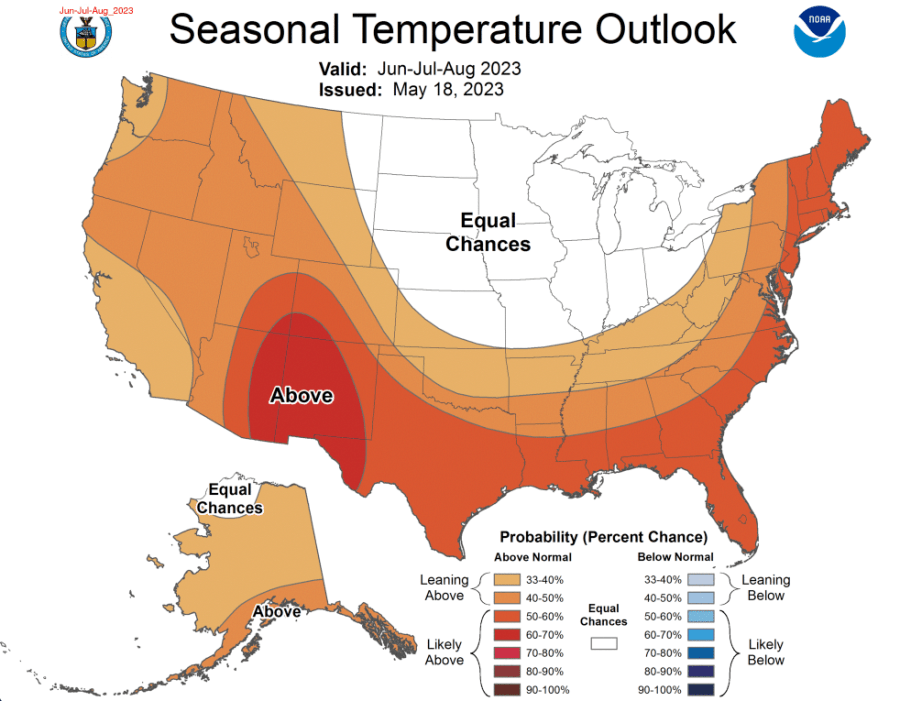NOAA releases summer weather predictions for all 50 states
(NEXSTAR) – This summer is shaping up to be a scorcher.
In its long-range weather outlook for June, July and August, the National Oceanic and Atmospheric Administration (NOAA) predicts most U.S. states are leaning toward a hotter-than-average summer.
The temperature map (below) is lit up in shades of orange and red. The darker the color, the higher the probability of above-normal temperatures.
The bullseye of the map, where an extra-hot summer is most likely, is centered around the southwest — an area where even “normal” August temperatures are in the 90s.
The only area not expected to see a hot summer is the Midwest. The outlook for those states is more of a toss-up, with equal chances of above-normal and below-normal temperatures.

Hawaii, which isn’t pictured on the map, is also expected to see above-normal temperatures between June and August, according to NOAA’s Climate Prediction Center.
The predictions for this summer’s precipitation are more patchwork. Much of the Midwest, Southeast and East Coast are leaning toward a wetter-than-average summer season. Meanwhile, the Southwest, Pacific Northwest and Hawaiian Islands look like they’ll be on the dry side.

NOAA’s summer predictions come as meteorologists are on standby for an El Niño to start any minute. Forecasters say there’s an 80% chance the transition to El Niño takes place between May and July.
However, even if El Niño does kick in before the start of summer, it probably won’t have a big impact on how hot or rainy it is, National Weather Service meteorologist Michelle L’Heureux explains. El Niño and La Niña’s biggest impacts are typically on winter weather.
“Historically El Niño events during the summer tend to have very weak impacts over the United States,” L’Heureux said. “Another way of phrasing that is that El Niño’s impacts can often be unreliable in the summer, and not repeat from one El Niño event to the next El Niño event.”
Because the link between El Niño and summer weather isn’t strong, NOAA forecasters use other data to inform their outlook for June through August.
One consequence of El Niño we may see this summer has to do with hurricane season, which starts on June 1. El Niño can strengthen hurricane season in the central and eastern Pacific, but it tends to contribute to weaker hurricanes forming in the Atlantic basin.
Copyright 2024 Nexstar Media Inc. All rights reserved. This material may not be published, broadcast, rewritten, or redistributed..











